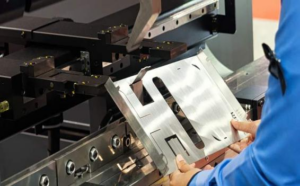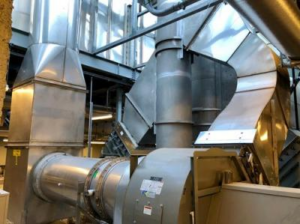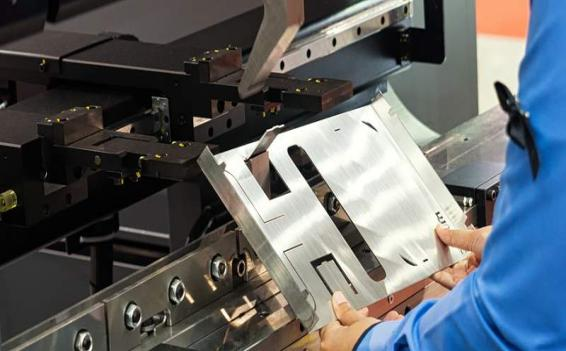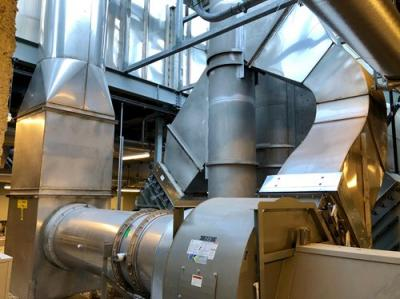Sandblasting: An In-Depth Exploration

Introduction
Sandblasting is a versatile and widely used process that has found applications in numerous industries. It involves the use of high-velocity streams of abrasive materials to clean, smooth, or shape a variety of surfaces. This technique has proven to be invaluable in areas such as manufacturing, construction, and restoration. In this article, we will delve into the details of sandblasting, including its working principle, technical knowledge, applications, and advantages, with a special mention of the TOP Prototype company.
Working Principle of Sandblasting
The basic principle of sandblasting is relatively straightforward. A compressed air source or other propellant is used to accelerate abrasive particles through a nozzle. These abrasive particles, which can include sand, silica, garnet, or other materials depending on the application, are directed towards the surface to be treated.
As the abrasive particles strike the surface with high force, they remove contaminants, oxides, paint, or other unwanted materials. They also can roughen or smooth the surface depending on the desired outcome. The velocity and size of the abrasive particles, as well as the pressure of the propellant, can be adjusted to achieve different levels of surface treatment. For example, in a typical sandblasting setup, compressed air is fed into a blasting chamber where it mixes with the abrasive material.
The mixture is then forced through a narrow nozzle at a high speed towards the object. The impact of the abrasive particles on the surface causes the material to be removed or modified, leaving a clean or textured surface as required.
Technical KnowledgeRelated to Sandblasting
Abrasive Materials:
- Sand: One of the most common abrasive materials historically used in sandblasting. However, due to health concerns related to silica dust inhalation (which can cause silicosis), its use has been somewhat restricted in many applications. It is relatively inexpensive and effective for general cleaning and surface preparation.
- Garnet: A popular alternative to sand. It has good abrasive properties and is less likely to cause health issues. Garnet comes in different grades and is suitable for a wide range of applications, from mild to aggressive surface treatment. It produces a clean, smooth finish and has a relatively long lifespan compared to some other abrasives.
- Silica: Although silica-based abrasives have the potential to cause health problems, there are some specialized applications where controlled use is still employed. For example, in certain industrial processes where its specific abrasive characteristics are required. However, strict safety measures must be taken to protect workers from inhaling silica dust.
- Other Abrasives: There are also many other types of abrasives used in sandblasting, such as aluminum oxide, steel shot, and glass beads. Each has its own unique properties and is chosen based on the specific requirements of the job, such as the type of surface, the desired finish, and the level of abrasiveness needed.
Equipment Components
- Blasting Nozzle: The nozzle is a crucial part of the sandblasting equipment as it determines the direction and dispersion of the abrasive stream. It comes in different sizes and shapes, and the choice of nozzle can affect the efficiency and quality of the blasting process. A narrower nozzle may increase the velocity of the abrasive particles, providing more aggressive cleaning or shaping, while a wider nozzle may cover a larger area but with less force per unit area.
- Compressor or Propellant System: This provides the force needed to propel the abrasive particles. The capacity and pressure of the compressor or propellant system must be appropriate for the size and type of job. A higher pressure may be required for more difficult surface treatments or for working with harder materials. Different types of compressors, such as piston compressors or rotary screw compressors, are available, each with its own advantages and limitations in terms of performance and cost.
- Blasting Chamber: In some cases, a blasting chamber is used to contain the blasting process. This helps to control the spread of abrasive particles and dust, making the operation safer and more efficient. The chamber may be equipped with features such as dust collection systems, lighting, and access points for loading and unloading the workpieces.
- Hose and Connectors: The hose is used to transport the abrasive and compressed air from the compressor or propellant source to the nozzle. It must be durable and able to withstand the pressure and abrasion of the blasting process. Connectors are used to join different parts of the equipment and ensure a secure and leak-free connection.
Safety Considerations
- Respiratory Protection: Given the potential for inhalation of abrasive particles and dust, proper respiratory protection is essential. Workers should wear respirators that are specifically designed for the type of abrasive being used and that meet relevant safety standards. For example, in the case of silica-containing abrasives, a high-efficiency particulate air (HEPA) filter respirator may be required.
- Eye Protection: The high-velocity abrasive stream can pose a risk to the eyes. Safety glasses or goggles with appropriate impact resistance should be worn to prevent eye injuries. In some cases, full-face shields may be more suitable, especially when working in an environment where there is a higher likelihood of debris flying in different directions.
- Skin Protection: Sandblasting can also cause skin irritation and abrasions. Workers should wear protective clothing, such as coveralls or aprons, made of durable materials that can resist the impact of abrasive particles. Gloves should also be worn to protect the hands.
- Noise Protection: The operation of the compressor and the blasting process can generate significant noise. Ear protection, such as earplugs or earmuffs, should be worn to prevent hearing damage. Additionally, measures can be taken to reduce noise levels, such as using sound-absorbing materials around the equipment or installing noise-reducing enclosures. ##
Applications of Sandblasting
- Manufacturing and Industrial Processes
- Surface Preparation for Painting or Coating: In the manufacturing of metal products, such as automobiles, machinery, and appliances, sandblasting is often used as a pretreatment step before painting or applying other coatings. It removes rust, scale, and old paint, ensuring better adhesion of the new coating and improving the overall quality and durability of the finish. For example, in the automotive industry, sandblasting is used to prepare the body of a car for painting, providing a clean and smooth surface that allows the paint to adhere evenly and last longer.
- Deburring and Deflashing: In the production of molded or machined parts, there may be burrs or flash (excess material) left on the surface. Sandblasting can be used to remove these imperfections, improving the quality and functionality of the parts. TOP Prototype company, for instance, uses sandblasting in their manufacturing processes to ensure the precision and smoothness of the prototypes they produce. This helps in reducing the risk of interference during assembly and improves the overall performance of the final product.
- Texturing and Finishing: Sandblasting can create different surface textures on materials. In the manufacturing of tools and dies, a specific texture may be required to improve grip or for aesthetic purposes. It can also be used to give a matte or satin finish to metal surfaces, adding a decorative element while also reducing glare. In the jewelry-making industry, sandblasting is used to create unique finishes on metal pieces, enhancing their visual appeal.
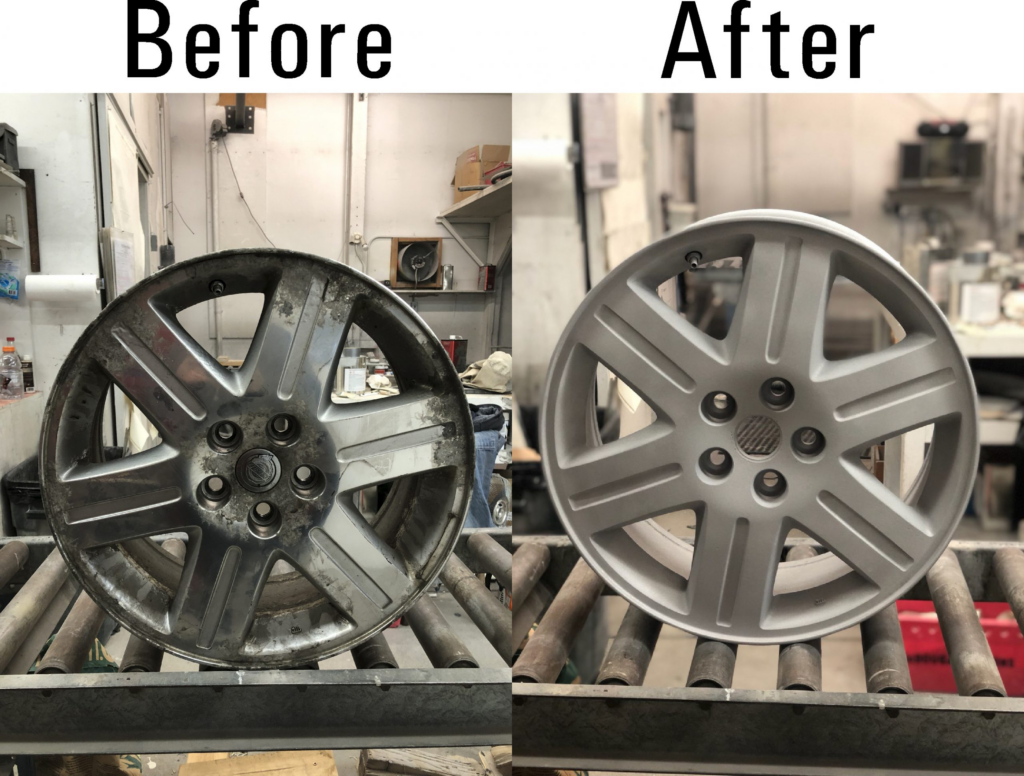
Construction and Restoration
- Building Restoration
Sandblasting is widely used in the restoration of old buildings and structures. It can remove dirt, grime, paint, and other coatings from masonry surfaces, such as brick, stone, and concrete, while preserving the integrity of the underlying material. This process can bring back the original appearance of historical buildings and increase their lifespan. In many cases, it is preferred over more aggressive methods that could cause damage to the structure. For example, when restoring an old church or a historic monument, sandblasting can be used to clean the exterior surfaces without harming the delicate architectural details.
- Concrete Surface Preparation
Before applying coatings or overlays to concrete floors or walls, sandblasting is used to roughen the surface and increase its adhesion. It can also remove laitance (a weak layer on the surface of freshly poured concrete) and expose the stronger underlying concrete. This is crucial for ensuring the long-term performance of the applied materials, such as epoxy coatings or decorative overlays. In construction projects, TOP Prototype company may be involved in providing sandblasting services for preparing concrete surfaces in commercial buildings or industrial facilities.
- Steel Structure Cleaning and Maintenance
In the construction of bridges, ships, and other steel structures, sandblasting is used to remove rust, corrosion, and old coatings. This helps in preventing further deterioration and extends the life of the structure. It also provides a clean surface for applying new protective coatings. Regular sandblasting maintenance can significantly reduce the cost of repairs and replacements in the long run.
Art and Decorative Purposes
- Sculpture and Artwork Creation
Sandblasting is a popular technique in the art world for creating unique textures and effects on sculptures and other artworks. Artists can use it to add depth and dimension to their pieces, creating a contrast between smooth and rough surfaces. It can also be used to carve or etch designs into materials such as glass, stone, or metal. For example, a glass artist may use sandblasting to create intricate patterns or frost a glass surface, giving it a unique aesthetic appeal.
- Interior Design and Decorative Surfaces
In interior design, sandblasting can be used to create decorative finishes on walls, floors, and countertops. It can give a rustic or industrial look, adding character to a space. For instance, a designer may choose to sandblast a concrete countertop to give it a textured and worn appearance, similar to that of an old factory floor. This can be a unique and stylish addition to a modern kitchen or bathroom design.

Advantages of Sandblasting
- Efficient Surface Cleaning and Preparation
Sandblasting is highly effective in removing a wide variety of contaminants from surfaces. It can quickly and thoroughly clean rust, paint, scale, and dirt, providing a clean and ready-to-treat surface. This efficiency saves time and labor compared to other cleaning methods, especially in large-scale industrial or construction applications. For example, in a shipyard, sandblasting can clean the hull of a ship much faster than manual scraping or chemical cleaning methods, allowing for quicker turnaround times for painting and maintenance.
- Versatility in Surface Treatment
The ability to adjust the abrasive type, size, and pressure allows for a wide range of surface treatments. It can be used to achieve a smooth finish for painting or coating, or to create a rough, textured surface for better adhesion or for aesthetic purposes. This versatility makes sandblasting suitable for a diverse array of materials and applications, from delicate jewelry to heavy industrial machinery. Whether you need to deburr a small plastic part or prepare the surface of a large steel structure, sandblasting can be customized to meet the specific requirements.
- Enhanced Durability and Adhesion
By removing contaminants and roughening the surface, sandblasting improves the adhesion of coatings and paints. This leads to a more durable and long-lasting finish. In the case of industrial coatings on metal surfaces, proper sandblasting can significantly increase the resistance to corrosion and wear, reducing the need for frequent maintenance and replacements. For example, in the automotive industry, the use of sandblasting before painting helps ensure that the paint job lasts longer and remains intact even under harsh conditions, such as exposure to sunlight, rain, and temperature changes.
- Cost-Effective in the Long Run
Although the initial investment in sandblasting equipment and abrasives may be significant, the long-term benefits often make it a cost-effective option. The improved durability of treated surfaces means less frequent need for rework or replacement. Additionally, the efficiency of the sandblasting process can lead to reduced labor costs and shorter project timelines. For instance, in a construction project, the cost of regularly maintaining a steel structure through sandblasting and applying protective coatings is much lower than the cost of dealing with extensive corrosion damage and structural failures that could occur if proper maintenance is not carried out.
- Environmental Friendliness (with Proper Precautions)
When compared to some traditional surface treatment methods that involve the use of harsh chemicals, sandblasting can be more environmentally friendly. However, it is important to note that proper dust collection and disposal systems must be in place to prevent the release of abrasive particles into the environment. With the use of modern equipment and techniques, such as enclosed blasting chambers with integrated dust collectors, sandblasting can be carried out in a way that minimizes its impact on the environment. TOP Prototype company, for example, may employ such environmentally friendly sandblasting practices in their operations, ensuring compliance with environmental regulations while still achieving high-quality surface treatment.
In conclusion, sandblasting is a powerful and versatile process with a wide range of applications in various industries. Its working principle, although simple in concept, involves technical knowledge and careful consideration of factors such as abrasive materials, equipment, and safety. The advantages it offers, including efficient surface cleaning, versatility, enhanced durability, cost-effectiveness, and environmental friendliness (when properly managed), make it an essential tool in manufacturing, construction, art, and many other fields.
The mention of TOP Prototype company throughout the article serves as an example of how this process can be integrated into real-world operations, highlighting its importance and practical applications. As technology continues to advance, sandblasting is likely to evolve and become even more efficient and sustainable, further expanding its role in different industries. Whether it’s restoring a historical building, manufacturing a high-precision prototype, or creating a unique work of art, sandblasting will continue to play a significant part in shaping and treating surfaces for a wide variety of purposes.

